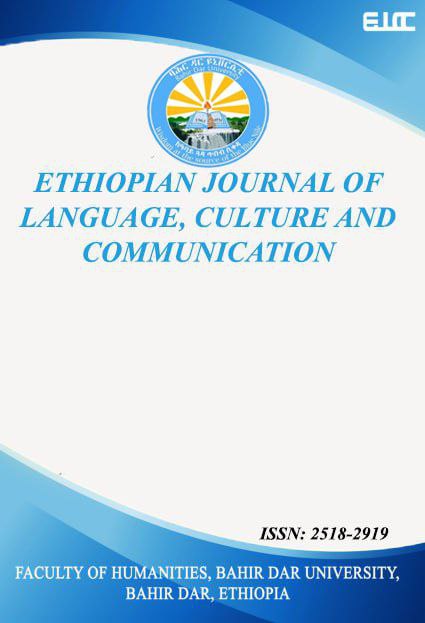Communication practices of agricultural extension: the case of north Wollo zone
Abstract
This qualitative study method aimed to assess agricultural extension communication practices and the use of agricultural information from the extension service and to identify the influencing factors in three Lalibela kebeles. A purposeful sampling technique was used to select the samples for the study. To this end, expressive data were collected through in-depth interviews, observation, and document analysis from farmers, development agents (DAs), and communication workers (CWs). In-depth interviews and observation sessions were conducted with 18 farmers, 4 DAs, 2 extension workers, and 2 communication workers. The findings from the thematic analysis employed revealed that the agricultural communication practices in the study area were generally low. The use of electronic and print media, in addition to interpersonal and group communication means, is also limited. Although farmers receive agricultural messages through interpersonal communication methods from extension workers, model farmers’ concept/demonstration sites, village meetings, and field days, agricultural productivity still fails to achieve the desired goals. As the research result showed, farmers receive messages from electronic media such as radio and print media such as flyers. Communication approaches, on the other hand, were top-down, in which programs or texts were shaped by communication workers with little involvement from farmers, agricultural extension workers, and DAs. In conclusion, for communications, whether print, electronic, or interpersonal, to play a critical role in communicating agricultural messages to the farmers and preventing agricultural development problems thereof, it needs to consider and integrate agricultural extension communication means.
Copyright (c) 2024 Ethiopian Journal of Language, Culture and Communication

This work is licensed under a Creative Commons Attribution-NonCommercial 4.0 International License.
Authors who publish with this journal agree to the following terms:
- Authors retain copyright and grant the journal right of first publication with the work simultaneously licensed under a Creative Commons Attribution License that allows others to share the work with an acknowledgement of the work's authorship and initial publication in this journal.
- Authors are able to enter into separate, additional contractual arrangements for the non-exclusive distribution of the journal's published version of the work (e.g., post it to an institutional repository or publish it in a book), with an acknowledgement of its initial publication in this journal.
- Authors are permitted and encouraged to post their work online (e.g., in institutional repositories or on their website) prior to and during the submission process, as it can lead to productive exchanges, as well as earlier and greater citation of published work (See The Effect of Open Access).


